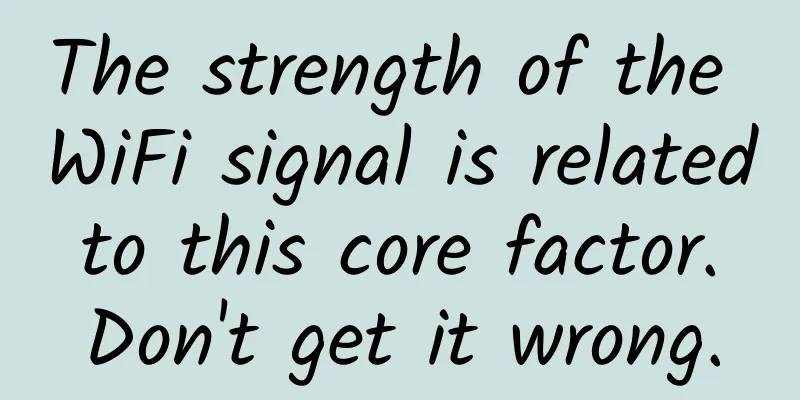The strength of the WiFi signal is related to this core factor. Don't get it wrong.

|
When buying a wireless router, you should buy one with large antennas and many antennas? I believe that many friends have this idea in their minds. Opening the wireless router sales page of the e-commerce website, we can find that wireless routers with 3 or more antennas basically occupy the top few hot-selling products. This also reflects the mentality of consumers when buying wireless routers now, "the more antennas, the better the signal." It is difficult to solve the problem of wireless signal at home simply by using a wireless router with multiple antennas. There are many factors that affect the strength of wireless signals.
The built-in antenna also has a strong signal The reason why wireless routers have multiple antennas is actually because of MIMO technology. Whether it is a product with 2 antennas or 3 antennas, it is to match the X*X MIMO mode. For example, the current mainstream single-band 300M and 867Mbps wireless routers must have a 2x2 MIMO mode, which means that two antennas are enough. If there are 3 or more antennas in a 2x2 MIMO product, it is the manufacturer's misleading of consumers. Moreover, with the popularity of dual-band wireless routers, some manufacturers have made independent external antennas for each frequency band, so it is not surprising that some wireless routers with 4 or 6 antennas have appeared. Transmission power directly affects the strength of wireless signals Importantly, the decisive factor for the quality of wireless router signals is the transmission power of the wireless router. All countries have regulations on the transmission power of wireless routers, which generally shall not exceed 100mW, that is, 20dBm (2.4GHz frequency band). So we can see that, in fact, according to national standards, the signal strength of the transmitter is fixed. No matter how many antennas there are, its transmission power will not change, and it will not affect the coverage of the wireless signal. In addition to the wireless router, we should also look for the cause from the receiving end. If the sensitivity of the wireless network card at the receiving end is not high, then the wireless Internet experience will be very poor. |
Recommend
Everyone says China is strong in 5G, but what makes it so strong? Why is it so strong?
Liu Xingliang (hereinafter referred to as "L...
How to use ip command to manage network in Linux
The most basic part of Linux administration and t...
ColoCrossing US VPS 50% off/Bare Metal Cloud 35% off, $1.97/month-1GB/25G SSD/20TB@1Gbps
ColoCrossing Easter promotion has started, with 5...
TmhHost Double 11: Japan/Hong Kong/US CN2 GIA high defense 20% off quarterly payment from 79.2 yuan, Hong Kong CN2/Japan CN2 monthly payment from 28 yuan
TmhHost launched a series of promotional plans du...
What will the Internet look like in 10 years?
The Internet has evolved tremendously over the pa...
Cisco and partners work together to build the Cisco (Guangzhou) Smart City industry ecosystem
In order to accelerate the development of Cisco (...
GreenCloudVPS: $30/year 500G hard drive VPS, 10Gbps bandwidth, Singapore (non-direct connection) data center
GreenCloudVPS recently installed new machines in ...
I've learned a lot! 5G is actually "changing society" in this way
Smart cities, smart grids, smart grazing/planting...
I secretly monitored their communication traffic...
I am a monitoring software. My master spent sever...
How to view the doomed failure of 5G network from a metaphysical perspective
It's time, fate, luck, and not 5G... Some thi...
Major events in the global Internet of Things in 2017
Recently, iot.ru reviewed the major events of the...
What does 5G bring to the Internet of Things today and tomorrow?
The Internet of Things is already booming, and we...
What exactly is “split brain” in distributed systems?
[[413929]] This article is reprinted from the WeC...
Wi-Fi 6 will be widely popular this year, and Wi-Fi 7 will be released next year: the speed can reach 40Gbps
Wi-Fi wireless network has become an indispensabl...









![[Christmas] ColoCrossing 35% off: $2.57/month-1GB/25G SSD/20TB@1Gbps/Los Angeles & New York Data Center](/upload/images/67cabc8c290e0.webp)